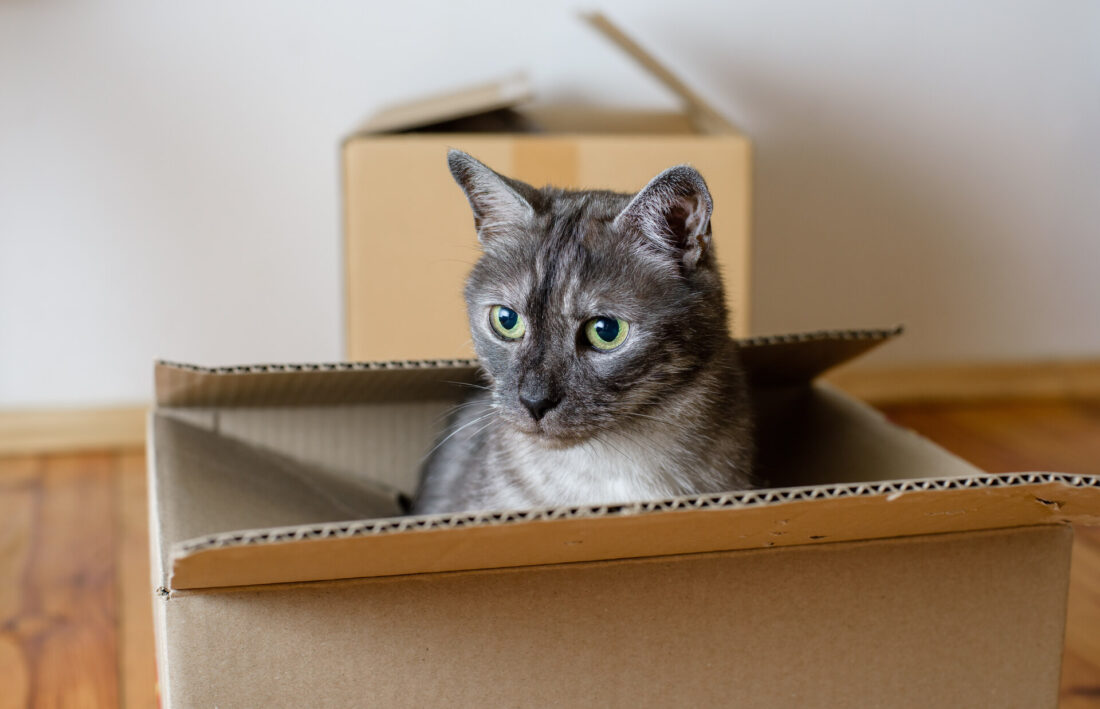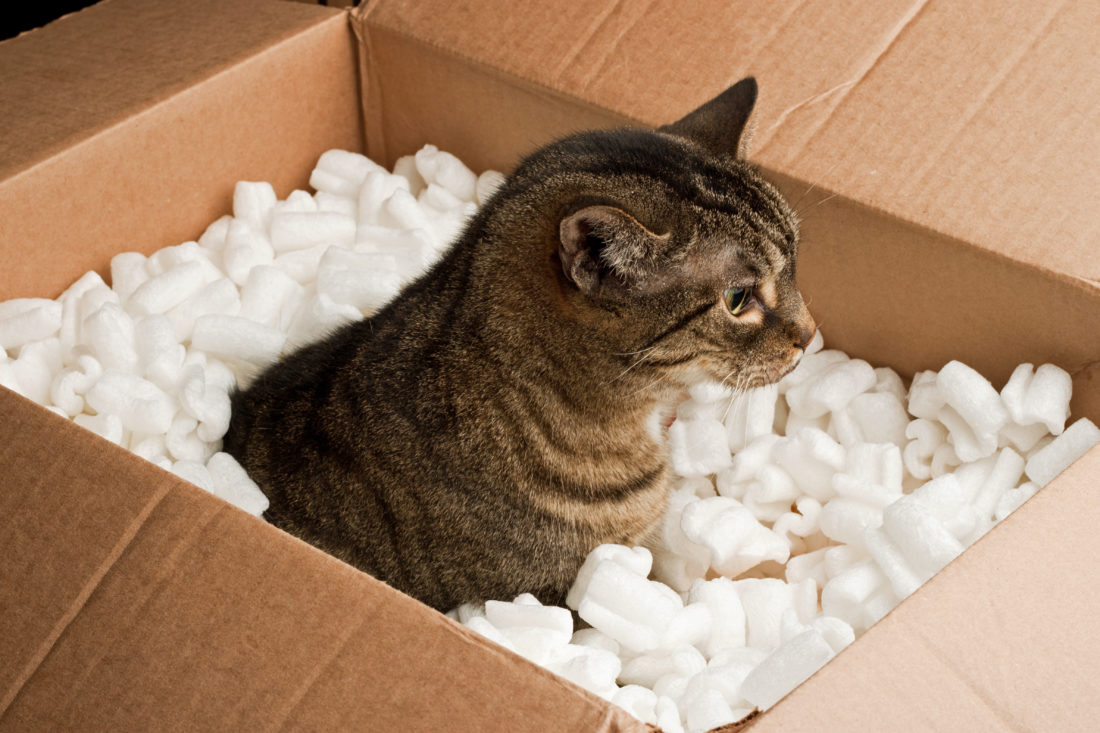If you think that relocating is stressful for you, know that it is even more stressful for your cat. They are creatures of territory, so moving with cats should be done carefully and gradually. You should prepare your furball and take every precaution to help them and make them feel safe.


Moving was your decision, and your kitty just got stuck in that situation. There are methods to ease this transition from one house to another, and they are very important since your feline can get serious behavioral and health issues if you are not careful.
Cats Are Territorial Regardless of the Breed
While you can count on specific behavior from certain dog breeds, cats are all in general territorial. What does this mean? This means that their territory is their comfort zone. Snatching your cat from its territory is more than stressful when getting an apartment out of state, it may even start refusing food and water. It is changing her whole life, behavior patterns, comfort zone, and routine. Cats mark your apartment with their scent by rubbing it on your furniture or walls. That way, they mark their territory and feel safe. When they encounter someone else’s scent, they immediately see it as a threat.
Cat Needs to Mark Her New Home
The same goes for the unmarked, unexplored surroundings. Cats can get overwhelmed in unfamiliar surroundings, and that affects their health as well as their behavior. They can become aggressive and frightened. They tend to hide under the furniture, bite you, and try to run away from the strange surroundings. They can reject food or start grooming excessively. The chance for this to happen multiplies with age. The more one cat stays at the same home, the more she is protective of it. This can occur when you try to add another member to your household as well.
Spraying Due to Stress
Now, we don’t mean that your pets aren’t attached to you, but removing her from her long-time home is something that can bring unpleasant surprises. Sometimes a cat can even start spraying their current territory, even when they are nurtured or spayed. It is unusual, but it is their defensive mechanism against possible intruders.
As you can see, many problems can arise from relocating with your cat, but it is easy to prevent them. You have to be mindful of your pets’ needs, and the transition should become much less stressful. Know your pets, know their habits and primal instincts, and you should be ok.
Preparation for Moving with Cats and Things to Consider to Transport Them Safely
While getting ready to move, and all the hassle of packing your apartment and organizing everything is at its peak, your cat will feel that and start behaving differently. They are energy sponges. They can feel your stress and act more aggressively or scared, which is why it is important you get over your anxiety about moving to another state. They cannot understand what is happening, but they can feel your fear of moving, and they don’t like the stress and discomfort of their guardian. One of the best tips here is to make sure you stay calm when you are with your pet if it is at all possible. And don’t forget to prepare and organize all the important documents you need for you and your pet.


A Guide to a Safe Transition When Moving with Cats
The transition from one house to another should happen in stages. That way, you can avoid all the stress for your kitty and yourself. If you prepare in advance and make the appropriate arrangements on the day of the transport and the first few days in a different home, you will be out of the woods.
Adult Cats Like Their Routine
If you want everything to go according to plan, one really important thing is not to break their routine. If they have, and they should, specific food time and playtime during the day and specific diet, try to stick to it. They usually act out when their routine and familiar conditions are disrupted. Your lovely lap cat can quickly become energetic and distrustful. You need to keep the same feeding schedule and keep the other daily activities as close and as often as possible to their usual routine.
When you start packing, you may move their litter box or anything else that will disrupt their living environment and remove some of their scent markers, so add a few extra scratching posts and scent soakers. You need to make your cat feel as safe as possible during the move.
Isolate Your Cat on the Moving Day
One of the best tips most people would suggest is to isolate your pet in a carrier or just some quiet space when the final preparations are done. Emptying a room all of a sudden can be quite a shock for them. Grab a few of their favorite toys, their bed or blanket, carrier, litter box, water, and food bowls and transfer them to a separate room with your kitty. Movers coming in and out of the apartment can be an unsafe environment for her. If she gets scared or feels threatened, she could run away, and you wouldn’t want that to happen, right?
Your kitty should have time to get used to moving boxes. One of the best tips is to bring boxes to your place a few weeks earlier and let your feline explore them. That way, you’ll both have fun, and she won’t get anxious around all those different objects.


Provide Proper Food to Keep Your Pet Healthy During This Stressful Period
If your pet has a chronic disease or any other health issue, you should visit your vet at least a month in advance. Schedule an appointment to check up on her condition and consult your vet about the relocation anxiety and diet. Some issues can deteriorate with the added stress. Also, your vet can prescribe you some mild sedatives to ease the transport in a carrier. Seek advice from your vet on how to prepare your pet for the relocation and settling in. Ensure that your kitty is up to date with all the vaccines, in case it slips outside. She can easily catch some disease if she is not vaccinated.
Keep the Owner Information up to Date
If your kitty isn’t microchipped, you should at least put a collar with your updated contact information. If your animal gets scared and runs away, someone should be able to contact you. If your kitty is microchipped, you should contact the vets’ office to update your information with the latest address.
Get Useful Advice on Webmd
If you need some advice from a vet, and your pets are generally healthy, you can get it online via Webmd®. It is essential to check up on them regularly, but if your last appointment with a vet went smoothly, you don’t have to waste your time visiting the clinic for advice or any help. Webmd is a platform with many useful articles for pets, and you can even get advice from highly-trained veterinarians if you have any questions.


Don’t Let Your Cat Run Free in Your New House
The transition period has three steps. The gradual departure, transport in a carrier and the final settling in your fresh home. While you might be tempted to let her explore your place freely, this can be very dangerous. She is unfamiliar with a new territory and boundaries and can easily get lost, run away, or get hurt. You should isolate her in a safe room, don’t let her out from the carrier for the first couple of hours and start from there. Most of the settling in should be done when you start slowly introducing your pet to different surroundings.
Make Sure That Everything Is Secured for Her to Explore New Home
First, “catify” your place. Be sure that there is no window or door that she can get out through. Secure all the outlets and cables if she likes to nibble on them. Slowly introduce her to the new home, room by room. Explore your place together and determine what the weak spots where the animal might get stuck or hurt herself are. Then you can find the perfect corner for your friend, put the litter box and the rest of the toys there, and let it adjust to the new space.
Getting Used to New Outdoor Surroundings
Even if you intend to let her out from time to time, or if she is as much as in-house as an outdoor cat, you should carefully let her explore with your oversight. If she is going out, she will have to adapt to a different community, and there are many situations that are dangerous for an outdoor cat. If you want your feline friend to be completely safe, scout your neighborhood and see for yourself if there are yards with dangerous dogs if there are some big colonies and what is the traffic like in your new community. The biggest threats are traffic, dogs, and other feral cats.


Stress-Related Health Issues
Even if you follow all the steps correctly, your kitty still may experience some stress and anxiety issues. It is important to recognize them and contact the vet to ask for help as soon as you do. If you don’t react on time, she can develop permanent behavioral disorders and health issues, so don’t take it lightly. Some of the symptoms of stress and anxiety are:
- Diarrhea, vomiting and other digestive problems
- Refusing food and water
- Runny nose and eyes
- Sudden weight loss or weight gain
- Eating non-digestible items like plastic or wool (“Pica” disorder)
- Lethargy and excessive sleeping
- Poor coat or fur condition
- Poor immune system
These are some of the symptoms that can occur for many reasons, but if they appear after relocation, they are probably due to stress.
Whenever you consider relocating with your pets, you should pay special attention to their needs and health. What relocation means for them is a disturbance of their territory, routine, and life in general. But, as a conscious owner, they rely on you to guide them through it safely. We are sure that you hold your pet’s needs in high regard, and we wish you good luck and a happy home with your furball.






